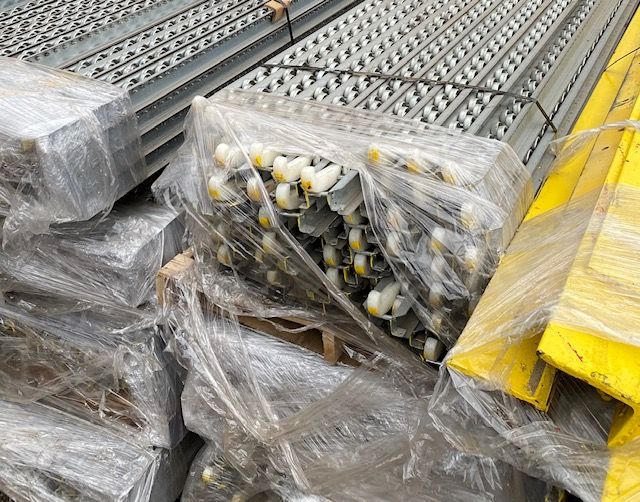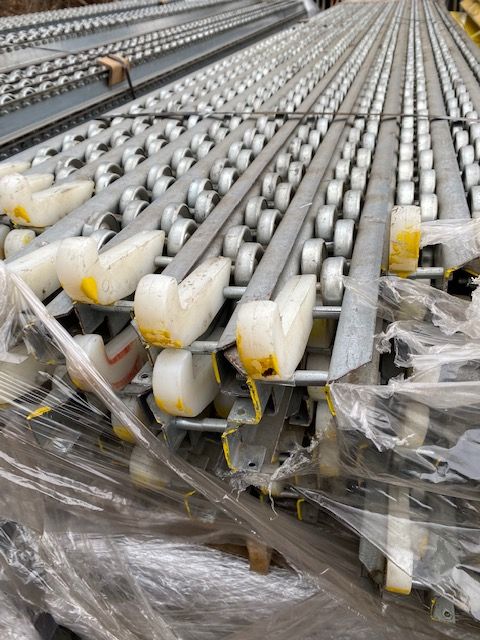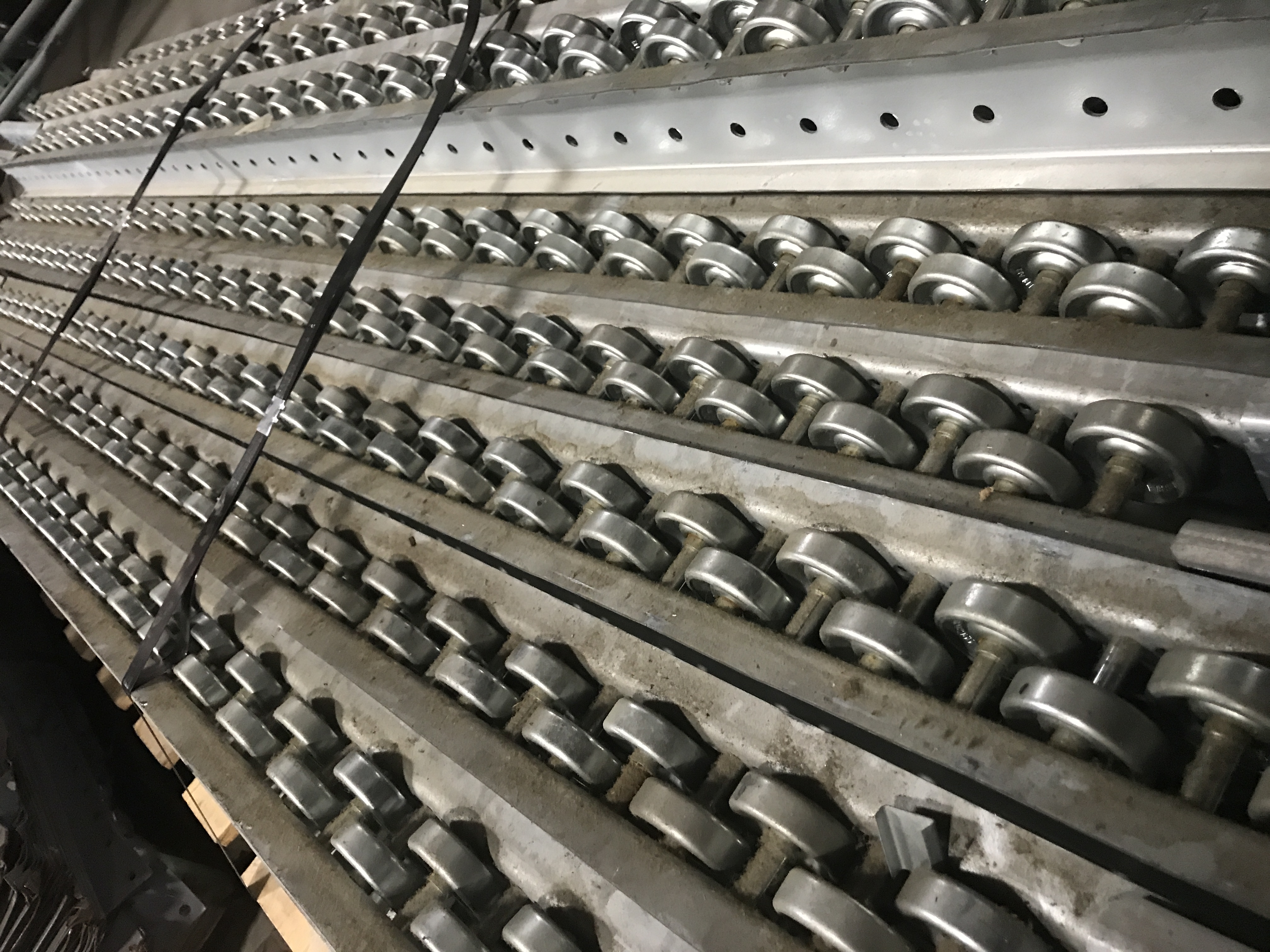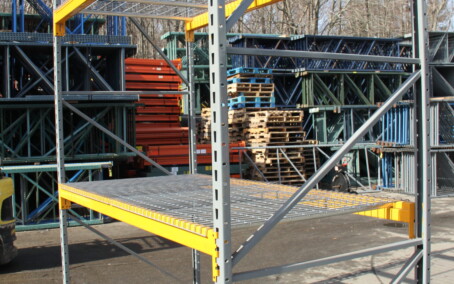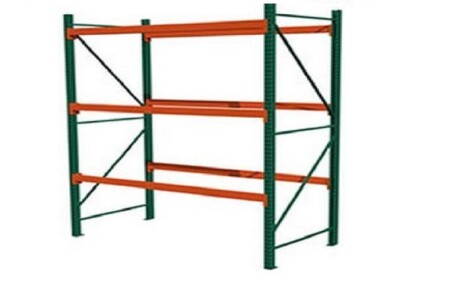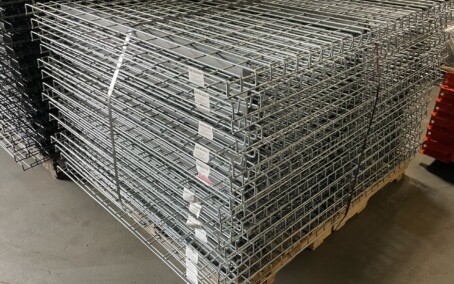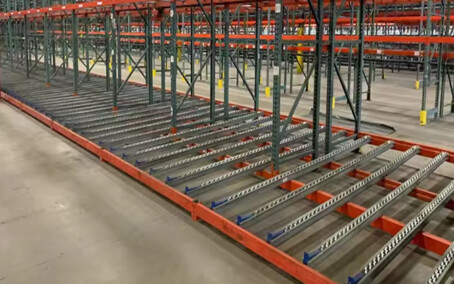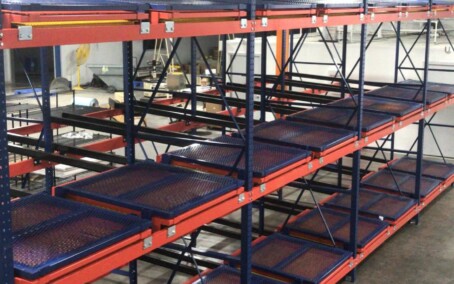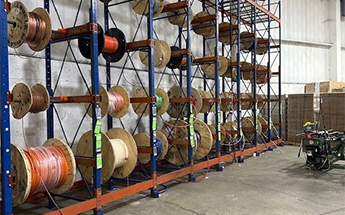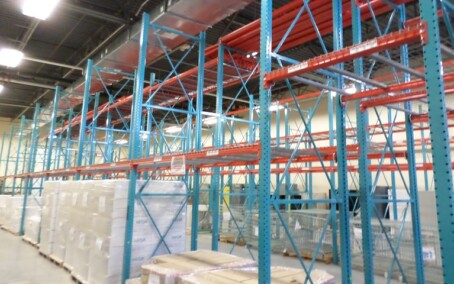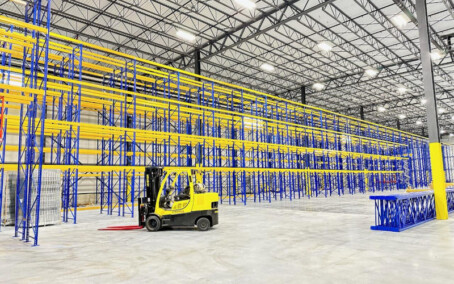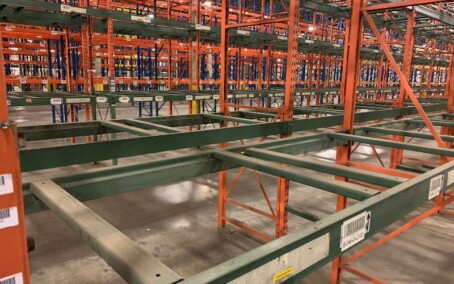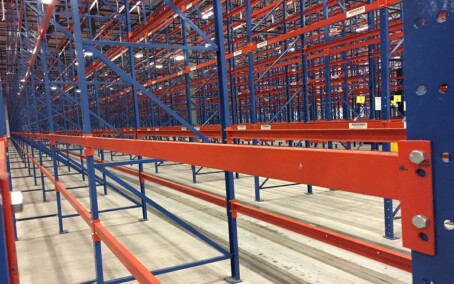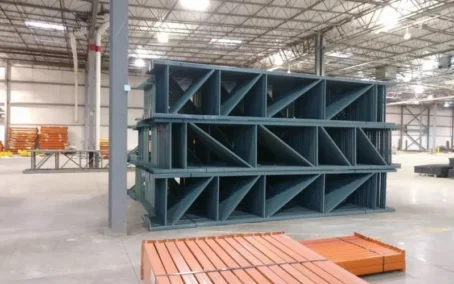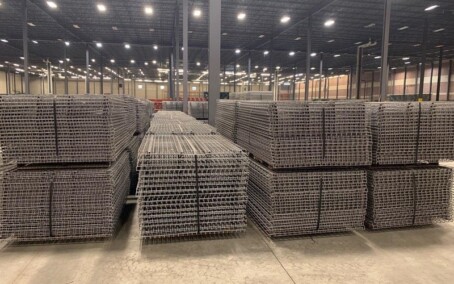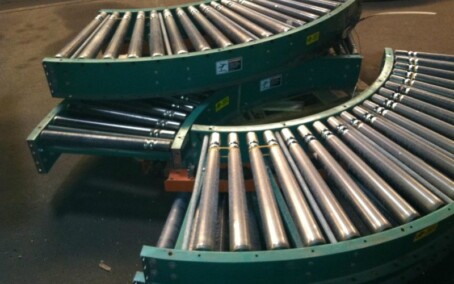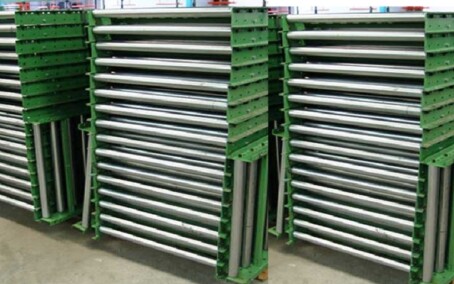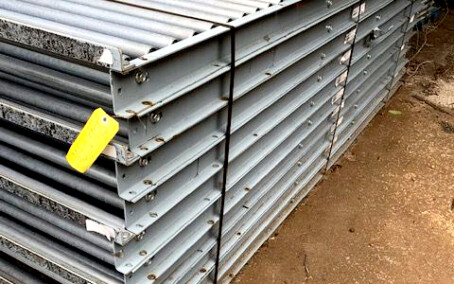A Reliable Solution for High-Density Storage
Pallet flow rail systems are an essential part of modern warehouse and distribution center operations, providing a highly efficient way to store and manage products. These systems utilize inclined tracks or rails to move pallets from the loading area to the picking position, using gravity to ensure smooth and consistent flow. With their ability to handle a wide variety of pallet sizes and types, pallet flow rails are ideal for environments where space optimization, product accessibility, and inventory control are crucial.
What Is a Pallet Flow Rail System?
A pallet flow rail system consists of a series of sloped rails or tracks that allow pallets to move naturally using gravity. As pallets are loaded onto the system, they roll along the rails toward the picking area. This design enables the oldest pallets to be picked first, ensuring the FIFO (First-In, First-Out) method is maintained. The smooth flow of pallets helps improve operational efficiency, reduce picking times, and minimize the risk of stock obsolescence.
Pallet flow rail systems are typically used in high-density storage areas, such as warehouse aisles or racking systems, where maximizing available space is a top priority. By utilizing vertical space and reducing the need for aisles and pathways, pallet flow rails help businesses store more goods in less space while still ensuring quick and easy access to inventory.
Benefits of Pallet Flow Rail Systems
1. Optimized Space Utilization: Pallet flow rail systems are designed to make the most of available space. By utilizing inclined rails that allow for gravity-driven movement, these systems enable businesses to store goods in a more compact, organized way. This helps reduce the need for wide aisles or pathways, freeing up valuable space for additional storage.
2. FIFO Inventory Management: With pallets automatically moving toward the picking area, pallet flow rails naturally support FIFO inventory management. The oldest pallets are always the first to be accessed, reducing the likelihood of product spoilage or expiration, particularly in industries like food, pharmaceuticals, and chemicals.
3. Improved Order Picking Speed: Because the pallet flow system ensures that pallets are always in the optimal position for picking, workers can retrieve goods quickly and efficiently. This reduces labor costs and helps increase throughput, which is especially important in high-volume environments where time is a critical factor.
4. Reduced Product Damage: The smooth, controlled movement of pallets along the flow rails helps minimize the risk of damage to products. With fewer manual handling steps involved, the likelihood of goods being dropped, bumped, or mishandled is significantly reduced, preserving the quality of inventory.
5. Low Maintenance Costs: Pallet flow systems are relatively simple and have few moving parts, which translates to lower maintenance and repair costs. The durable materials used in the construction of the rails and tracks ensure longevity and reliability, making it a cost-effective solution for long-term storage needs.
Types of Pallet Flow Systems
Pallet flow rail systems can be customized to fit a variety of needs and configurations, including:
1. Standard Pallet Flow: This is the most common type, designed for general-purpose storage and distribution. It uses simple gravity-fed rails to move pallets from the back of the system to the front, where they can be easily accessed.
2. Adjustable Pallet Flow: This system allows for the adjustment of the rail incline and other parameters to accommodate different pallet sizes or weights. Adjustable pallet flow systems are ideal for businesses with varying product types and storage requirements.
3. Heavy-Duty Pallet Flow: Designed for storing large, heavy pallets, heavy-duty pallet flow systems are built with reinforced rails and stronger components to handle the increased weight and demands of industrial environments.
Applications of Pallet Flow Systems
Pallet flow rail systems are commonly used in industries that require efficient inventory management and space optimization, such as food and beverage, retail, pharmaceuticals, and automotive manufacturing. These systems are particularly effective in environments where products have a limited shelf life or need to be rotated quickly. With their ability to increase throughput, improve storage density, and reduce handling times, pallet flow systems are an excellent investment for businesses seeking to streamline their operations.
In conclusion, pallet flow rail systems provide a practical, reliable solution for warehouses and distribution centers looking to enhance their storage capabilities. Whether used for high-density storage, inventory rotation, or faster order picking, these systems offer a range of benefits that help companies optimize their operations and reduce costs.


